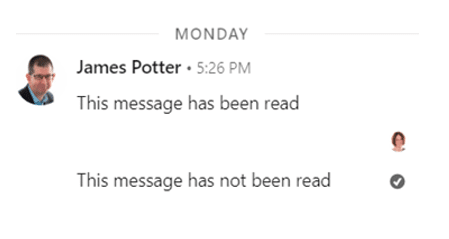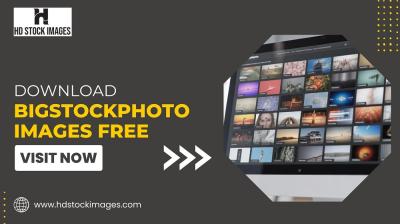LinkedIn messaging is a powerful tool that enables professionals to connect, network, and communicate effectively. Whether you’re reaching out to a potential employer, collaborating with colleagues, or simply expanding your professional circle, understanding how LinkedIn messaging works can enhance your networking experience. In this digital age, where first impressions are often made online, knowing how to navigate these messages is essential for making meaningful connections.
What Does the Check Mark Symbol Mean?
The check mark symbol in LinkedIn messages carries significant meaning, reflecting the status of your communication. Here’s a breakdown of what these check marks signify:
- Single Check Mark (✓): This indicates that your message has been sent successfully. It’s akin to a thumbs-up, showing that your communication left your end without any hitches.
- Double Check Marks (✓✓): When both check marks appear, it means that your message has been read by the recipient. This is crucial for understanding whether your message has been acknowledged, allowing you to gauge engagement.
- No Check Marks: If you see no check marks, it means your message has not yet been delivered. This could be due to various reasons, such as the recipient’s privacy settings or connectivity issues.
Understanding these symbols helps you manage your expectations regarding responses. For instance, if you see a single check mark, it’s a cue to be patient, while double check marks might prompt you to follow up if you haven’t received a reply. This simple visual language in LinkedIn messaging enhances communication clarity and allows for more efficient networking.
Also Read This: How to Ask to Connect on LinkedIn: Writing the Perfect Message
3. Different Types of Check Marks
When you send a message on LinkedIn, you might notice different check marks appearing next to your message. Understanding these check marks can enhance your communication experience on the platform. Let’s break down the three main types of check marks:
- Single Check Mark: This appears when your message has been sent successfully. It means that your message has left your inbox and is en route to the recipient. However, it does not indicate whether the recipient has seen it yet.
- Double Check Marks: When you see two check marks, it signifies that your message has been delivered to the recipient's inbox. This is a good sign that your message is waiting for their attention.
- Blue Check Marks: This is the most significant indicator. If you see two blue check marks, it means that the recipient has not only received your message but has also read it. This feature is particularly useful in professional settings where timely responses matter.
Each type of check mark serves as a visual cue to help you understand the status of your communication, making it easier to navigate follow-ups and responses.
Also Read This: How to Find Your LinkedIn Username and Make Your Profile Searchable
4. Implications of Check Marks for Communication
The presence of check marks in LinkedIn messages carries several implications for how we communicate. Let’s explore some of these:
- Response Timing: Knowing whether your message has been read can influence how quickly you follow up. For instance, if you see two blue check marks but no response, you might consider reaching out again to ensure your message was received well.
- Professional Etiquette: In a business context, understanding these indicators helps maintain professionalism. If you notice that someone has read your message but hasn’t replied, it might be a signal to adjust your communication style or approach.
- Building Relationships: Using these insights can help you gauge the recipient’s engagement level. If someone consistently reads your messages but does not respond, it might prompt you to rethink your messaging strategy.
Ultimately, being aware of the implications of check marks can enhance the quality of your interactions on LinkedIn, fostering better relationships and more effective communication.
Also Read This: How Much Does It Cost to Post Jobs on LinkedIn? Pricing and Options
5. Best Practices for Using LinkedIn Messages
When it comes to communicating on LinkedIn, your approach can make a significant difference. Here are some best practices to ensure your messages are effective and professional:
- Personalize Your Message: Always address the recipient by name. A simple "Hi, [Name]" can create a connection. Avoid generic, copy-pasted messages.
- Be Clear and Concise: State your purpose early in the message. Aim for clarity to respect the recipient's time. For example, instead of saying, "I want to discuss some opportunities," specify, "I'd love to explore potential collaboration on [specific project]."
- Use Professional Language: Maintain a respectful tone. Avoid slang or overly casual language, as it can come off as unprofessional.
- Include a Call to Action: Whether you're requesting a meeting or seeking advice, make your intentions clear. Phrases like "Can we schedule a call?" are straightforward and effective.
- Follow Up, But Don’t Spam: If you don’t get a response, it’s okay to send a gentle reminder after a week or so. Keep it light and polite.
Incorporating these practices can enhance your messaging experience, making it more productive and engaging for both parties.
6. Conclusion: The Importance of Clarity in Professional Messaging
In the fast-paced world of LinkedIn, clarity in messaging is paramount. When you send a message, you’re not just conveying information; you’re shaping perceptions. Here’s why clarity is crucial:
- Reduces Miscommunication: Clear messages minimize the risk of misunderstandings. For instance, if you're discussing a project deadline, state it clearly: "The project is due on March 15th."
- Enhances Professionalism: A well-articulated message reflects your professionalism and attention to detail. It shows that you value the recipient’s time.
- Encourages Positive Responses: When your message is straightforward, recipients are more likely to respond positively. They can quickly grasp your intent and act accordingly.
- Builds Trust: Consistently clear communication fosters trust in professional relationships. People are more inclined to engage with someone who communicates effectively.
In summary, investing time in crafting clear and concise LinkedIn messages can pave the way for meaningful connections and opportunities. Embrace clarity, and watch your professional network flourish!

 admin
admin








